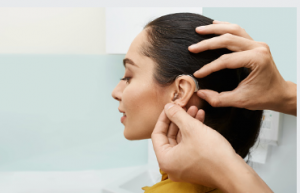There are many benefits to wearing hearing aids, but which is best for you? Here are some tips on the different types of hearing aids, from their fit and acoustics to their price. Once you’ve read these tips, you should be able to find a suitable hearing device for your needs. The following are some things to consider when choosing your hearing device. Also, keep in mind that not all hearing aids are the same.
Acoustic fit
 Many factors determine hearing aids Adelaide acoustic fit, including technology level, style, patient experience, and dexterity. Most hearing aids are programmed for a first-fit setting, which will consider an individual’s specific hearing loss and hearing aid-related factors. While the audiogram is considered the most important factor, other factors, including leakage and open ear canals, can affect the sound level.
Many factors determine hearing aids Adelaide acoustic fit, including technology level, style, patient experience, and dexterity. Most hearing aids are programmed for a first-fit setting, which will consider an individual’s specific hearing loss and hearing aid-related factors. While the audiogram is considered the most important factor, other factors, including leakage and open ear canals, can affect the sound level.
During the fitting process, HCPs must compromise the benefits of signal processing algorithms, amplification, and own-voice perception. Digital hearing aids, on the other hand, have adapted to acoustic conditions and user intent, and HCPs are used to working with these systems. However, in the past, adaptive behaviour has not considered acoustic coupling. The technology for hearing aids has shifted in recent years, but the acoustic fit of a hearing aid is still a balancing act.
Physical fit
Many factors go into the physical fit of hearing aids Adelaide. One of the most important factors is how comfortable a hearing aid feels in the ear. An audiologist can evaluate this factor by observing how well the earmold and hearing aid fit. Other factors include cosmetic appeal, feedback-free hearing, and ease of insertion and removal. The fit is also crucial to the ease of use of controls on a hearing aid. If the fit is not perfect, an audiologist can modify the fit of the device by remaking the shell.
Noise reduction
Most hearing aids include noise reduction technology as a standard feature. However, the settings may require a follow-up appointment for the hearing aid user to ensure that the device is set correctly. For example, people living in care homes may need to use different settings than those living alone. In addition, hearing aids should be programmed to suit individual needs and preferences. The following sections provide more information on adjusting noise reduction technology for hearing aids.
Digital hearing aids programmed with a flat SNHL configuration showed more significant variability when the degree of DNR was varied. Brand B, for example, showed minimal gain reduction while Brand C offered maximum DNR. It may be related to differences in algorithmic design between manufacturers. Nevertheless, the underlying principle remains the same: a hearing aid can make a person understand speech with as little background noise as possible. The algorithm used to calculate DNR varies between hearing aids, and therefore the effectiveness of DNR varies.
Price
The price of hearing aids is often the determining factor when people decide to purchase them. According to Dr Dan G. Blazer, a professor of psychiatry at Duke University, several factors influence the cost of hearing aids. First, many hearing care professionals bundle all costs into a final retail price. These costs include the costs of the hearing device manufacturer and the provider, training, diagnostic machines, marketing, and ongoing patient support. To reduce the overall cost, Blazer recommends that providers and patients choose to purchase hearing aids that are unbundled.
Directional microphones
The use of directional microphones has several potential advantages over conventional hearing aids. They provide improved speech recognition, patient satisfaction, and hearing benefit for noise and speech. However, directional microphones’ performance is negatively impacted by reverberation and increased talker/listener distance. Therefore, matching patient expectations with the selected technology is essential. It can be done through assessments of SNR loss and subjective patient needs.
Rechargeable batteries
Rechargeable batteries are a popular option for hearing aids, as they can last a full day or more. Recharging overnight can save a great deal of money, and many hearing aids can last up to 24 hours on a single charge. Another convenient option is a pocket-size lithium-ion charger, which can fully recharge a hearing aid in about 3 hours. Recharging your hearing aids is essential to hearing aid maintenance, and the Mini Turbo Charger is a convenient way to recharge your devices.